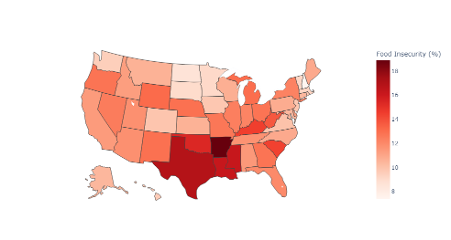In the Centers for Disease Control and Prevention (CDC) 2025 publication Principles of Community Engagement, community engagement is defined as building “sustainable relationships through trust and collaboration, strengthening community well-being”. Wallerstein et al. (2015) emphasized that essential strategies for a wide variety of community and organizational settings can be developed through community engagement and organizing. The recent flash flooding in Central Texas over the July 4th holiday weekend is an example of this engagement with numerous nonprofit charitable organizations involved in search, rescue, cleanup, and support efforts. These organizations include Texas Search and Rescue (TEXSAR), Texas Division of Emergency Management (TDEM), the Federal Emergency Management Agency (FEMA), the Community Foundation of the Texas Hill Country, the Salvation Army, the American Red Cross, Kerrville Pets Alive, and many others. This article explores the contributions of charitable nonprofit organizations to community development, showcasing selected models of engagement and their broader regional impact in the southern U.S.
Community engagement through charitable organizations is a cornerstone of sustainable economic and social development across the United States (Wallerstein et al. 2015; Balsano 2005). These organizations support jobs and consume goods and services, thereby investing directly and indirectly into the local economy and contributing to community economic development. Furthermore, their community involvement and presence encourage charitable giving. Giving USA (2025) reported an overall increase in charitable donations of 6.3% in 2024, although there have been fluctuations in donations over the past five years. Studies have found that individuals receive some level of personal satisfaction when they donate (Crumpler and Grossman 2008; Hughes 2006; Steinberg 1997). Figure 1 shows that revenue per capita and the share of nonprofit relative to private employment are more concentrated in the northern United States, with relatively lower levels in the southern states. This regional disparity highlights lower nonprofit revenue per capita and fewer paid staff or volunteers relative to the for-profit private sector in southern communities.
The Southern region’s unique challenges, including higher poverty rates, food insecurity, and more frequent natural disasters compared to other U.S. regions (Thomas and Liao 2024), underscore the critical role of non-profit organizations in community development. Non-profit organizations such as regional food banks, Lions Club International, and Rotary Club have emerged as crucial partners in addressing some of these challenges through targeted interventions and community mobilization. For instance, the U.S. Department of Agriculture (USDA) reported that 14% of households in the Southern U.S. faced food insecurity between 2021 and 2023, leading to a rise in demand for food assistance from regional food banks. Lions Club International’s southern chapters implemented over 2,500 community service projects in 2022, focusing on vision care, diabetes prevention, and youth development programs. These organizations leverage volunteer networks and community resources to address immediate needs while building long-term resilience through education, health services, and disaster preparedness initiatives.
A more localized nonprofit is the Texas A&M University’s The REACH Project, which exemplifies innovative approaches to community development through academic-community partnerships. This project has demonstrated remarkable success in supporting essential workers through comprehensive support services. Currently, it has assisted over 3,000 essential workers and their families, providing access to affordable housing solutions, healthcare services, and educational opportunities. Similar initiatives have emerged in Alabama, such as the Black Belt Community Foundation, the foundation awarded over $500,000 in 2024 through 130 grants to community and arts organizations across 12 counties. The initiative supports local efforts in community development and the arts, reflecting its commitment to empowering the Black Belt region. These programs demonstrate the effectiveness of collaborative approaches involving academic institutions, local communities, and non-profit organizations in fostering sustainable development.
The impact of charitable non-profits on communities extends beyond immediate service delivery to fundamental social and economic transformation. Research indicates that communities with higher levels of non-profit engagement demonstrate greater resilience during economic downturns and natural disasters (Roberts et al., 2021; Searing et al., 2023). According to Giving USA (2025), nonprofits that retained 10% more of their donors experienced up to a 200% increase in fundraising revenue during the 2023 economic downturn, demonstrating how sustained nonprofit engagement enhances financial resilience. As the southern region faces evolving challenges from climate-related disasters to economic disparities, charitable non-profits play an increasingly vital role in community development. Strengthening collaboration with these organizations represents a crucial investment in building more resilient and sustainable communities.
Figure 1: Nonprofit Revenue Per Capita and Private Nonprofit Employment Share by State in 2023

References
Balsano, A.B. 2005. Youth civic engagement in the United States: Understanding and addressing the impact of social impediments on positive youth and community development. Applied Development Science 9(4): 188-201.
Black Belt Community Foundation. Retrieved April 15, 2025, from https://blackbeltfound.org/news/2025artscommunitygrants/.
Centers for Disease Control and Prevention: CDC/ATSDR. 2025. Principles of community engagement (3rd ed.). https://hsc.unm.edu/population-health/_documents/principles-of-community-engagement_3rd-edition.pdf.
Crumpler, H., and P. Grossman. 2008. An experimental test of warm glow giving. Journal of Public Economics 92(5-6): 1011-1021. https://doi.org/10.1016/j.jpubeco.2007.12.014.
Hughes, P. 2006. The economics of nonprofit organizations. Nonprofit Management and Leadership 16(4): 385-508. https://doi.org/10.1002/nml.119.
Lions Clubs International. Southern Region Community Service Impact Report 2022. Retrieved April 15, 2025, from https://www.lionsclubs.org/en/discover-our-clubs/service-report-2022.
National Council of Nonprofits. (n.d.). Economic impact of nonprofits. Retrieved July 15, 2025, from https://www.councilofnonprofits.org/about-americas-nonprofits/economic-impact-nonprofits.
Roberts, F., F. Archer, and C. Spencer. 2021. The potential role of nonprofit organizations in building community resilience to disasters in the context of Victoria, Australia. International Journal of Disaster Risk Reduction 65. https://doi.org/10.1016/j.ijdrr.2021.102530.
Searing, E.A.M., K. Wiley, and S.L. Young. 2023. Resiliency tactics during financial crisis. In The Nonprofit Resiliency Framework, Routledge. https://doi.org/10.4324/9781003387800-34.
Steinberg, R. 1997. Overall analysis of economic theories. Voluntas 8 (2): 179–204.
The REACH Project. Retrieved April 15, 2025, from https://agsreach.networkforgood.com/.
Thomas, C., and A. Liao. 2024. The Food Insecurity Challenge: A Snapshot of the Southern U.S. Southern Ag Today 4(40.5). October 4, 2024. https://southernagtoday.org/2024/10/04/the-food-insecurity-challenge-a-snapshot-of-the-southern-u-s/.
United States Department of Agriculture. Economic Research Service. Retrieved April 15, 2025, from https://www.ers.usda.gov/data-products/food-security-in-the-united-states.
Wallerstein, N., M. Minkler, L., Carter-Edwards, M. Avila, and V. Sanchez. 2015. Improving health through community engagement, community organization, and community building. In K. Glanz, B.K. Rimer and K. Viswanath (Eds.), Health behavior: Theory, research, and practice (pp. 277-300). Wiley.
Thomas, Chrystol, An-Ting Liao, and Sreedhar Upendram. “Nonprofit Organizations and Community Engagement: Bridging Gaps in Local Support.” Southern Ag Today 5(30.5). July 25, 2025. Permalink





